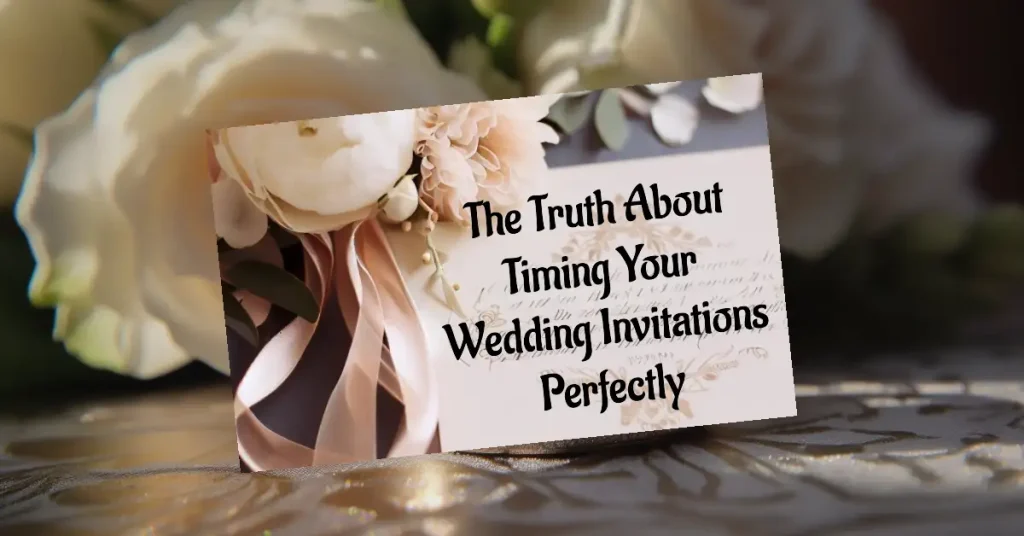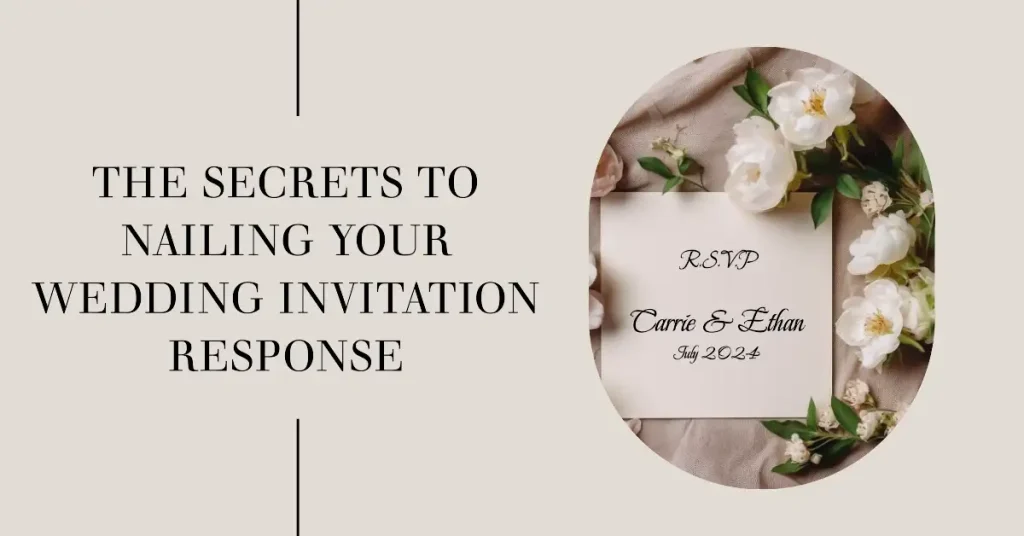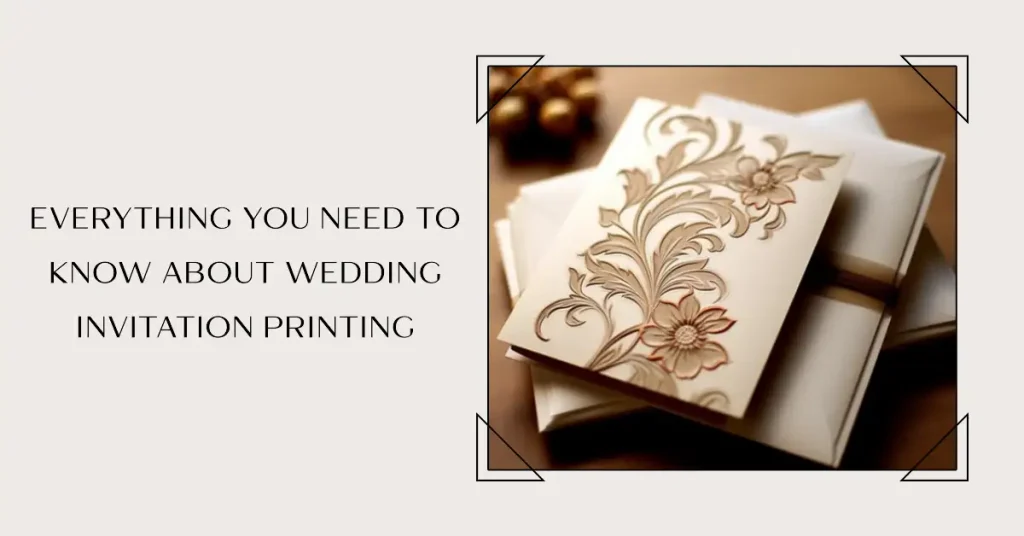Table of Contents
Addressing a wedding invitation to a family can be done with finesse by including the whole clan. Simply use the family name followed by ‘and Family’ or specify the names of each family member to ensure a warm and inclusive invitation.
I’m sure you’ll agree that the magic of weddings starts not when guests step onto the decorated venue, but when they first hold that elegant invitation in their hands. It’s a window into the joy and celebration to come. Therefore, it’s essential that every detail, including the addressing of these invitations, is done with care. So let’s dive into this together, shall we?
Understanding the Basics
Traditional Etiquette
When it comes to addressing wedding invitations, there’s a traditional etiquette we can look to. This etiquette has its roots in a time when formality was key and respect for social and professional titles was paramount. Now, you may wonder if these traditional ways still hold sway in our more casual, modern era. The answer is – yes, they do. Especially in formal or grand weddings, adhering to these traditions speaks to your attention to detail and your respect for your guests.
- Carter, Lisa (Author)
- English (Publication Language)
- 107 Pages - 04/06/2024 (Publication Date) - Independently published (Publisher)
Think of how it feels to have your name incorrectly addressed. It’s a tiny hiccup, but it subtly alters how one experiences your wedding. Correct addressing, on the other hand, makes guests feel respected and cherished right from the get-go.
Importance of Precision and Accuracy
Precision and accuracy are integral in this process. It goes beyond merely getting the spelling right. It’s about understanding and acknowledging the identity of your guests. Consider titles, for instance. If someone is a doctor or a judge, acknowledging that in your invitation is a nod to their achievements and status.
And it’s not just about professional titles. Marital status, nicknames versus full names, the correct order of names — all these are aspects you need to be aware of when you are addressing your invitations.
Moreover, precision and accuracy in addressing extend to getting the right names on the right envelopes, ensuring accurate postage, and correctly labeling the return address. When done correctly, these can help prevent invites from being lost or delayed in the mail.
The Role of Proofreading
So, how do we ensure precision and accuracy? The answer lies in thorough proofreading. While this might seem like an obvious step, it can often be overlooked in the hustle and bustle of wedding planning. Set aside some quiet time to go through each invite carefully. Check the names, the titles, the spelling, and the postal addresses. A second pair of eyes can be a great help, so don’t hesitate to involve your partner or a family member.

Types of Families & Appropriate Addressing
Addressing a Traditional Nuclear Family
When it comes to a traditional nuclear family (think mom, dad, and kids), the addressing is typically straightforward. A simple “The Smith Family” on the envelope would suffice. It conveys a sense of unity and inclusion for all members of the family.
Families with Different Last Names
In our diverse society, it’s common for family members to have different last names. This could be because the parents have chosen to retain their individual last names, or it could be a blended family. In such cases, it’s important to include all last names when addressing the invitation. For instance, use “Mr. John Smith and Ms. Jane Doe” to show respect for each individual’s chosen name.
Families with Stepchildren or Adopted Children
When it comes to families with stepchildren or adopted children, it’s a wonderful gesture to include their names on the envelope. It adds a personal touch and makes them feel seen and valued as part of the family unit. A way to do this could be: “Mr. John Smith, Ms. Jane Doe, and Family.” Alternatively, you can list out the names of the children for an even more personalized approach.
Families with Adult Children Living at Home
There may be situations where adult children (those above 18) are still living at home. In these cases, it’s advisable to send them their own invitation. This acknowledges their individuality and adult status. It shows your guests that you see and respect their growing independence.
Families with Doctor Parents
When one or both parents in a family are doctors, it’s crucial to acknowledge their professional titles in the address. It shows respect for their profession and their accomplishment. Use “Doctors Jane and John Doe” if both are doctors or “Dr. Jane Doe and Mr. John Doe” when only one parent is a doctor. It’s all about showing your guests that you know them and respect their identities.
Single-Parent Families
For single-parent families, ensure that the invitation feels inclusive and respectful. Addressing the invitation to “Ms./Mr. Jane/John Doe and Family” shows that you recognize the parent’s role in the family unit.
Addressing Invitations to Individuals Within a Family
Inclusion of Children
Including each family member on the wedding invitation creates a sense of inclusivity, making everyone feel personally invited and valued. This approach is particularly impactful when it comes to children. Although younger kids may not fully grasp the significance of their names appearing on the envelope, it’s a gesture that parents will certainly appreciate.
When it comes to children under 18, their names can be included on the inner envelope, if you’re using one. Following traditional etiquette, you would address the outer envelope to the parents—”Mr. and Mrs. Doe,”—and then list the parents and children on the inner envelope—”Mr. and Mrs. Doe, Jessica, and Brian.”
Addressing Teenagers and Adult Children
Teenagers, particularly those who are 18 and older, should receive separate invitations. The same applies to adult children living at home. This approach acknowledges their growing independence and status as young adults. Not only is this a respectful gesture, but it also helps foster a sense of personal connection to the event.
Addressing Invitations to Extended Family Members
Recognizing the Significance of Extended Family
Weddings are a celebration of love and togetherness, and often they provide a wonderful opportunity to connect with extended family members. Aunts, uncles, cousins, and even distant relatives can play an important part in your wedding festivities, and their invitations should reflect their unique roles in your life and within the broader family dynamic.
Individualized Addressing
Addressing extended family members individually on the invitations is a gesture of respect and recognition. It communicates that they are not merely nameless faces within a crowd, but individuals who matter and whose presence at your wedding is valued.
For example, using “Mr. and Mrs. Roberts” for an uncle and aunt, or “Miss Jennifer Roberts” for a cousin, adds a personal touch that will not go unnoticed.
It’s also important to remember to use the appropriate salutations for unmarried women (“Miss” for under 18, “Ms.” for 18 and above) and married women (“Mrs.”), and to respect any professional titles.
Considering Family Dynamics
In complex family situations, such as divorced or remarried relatives, sensitivity is key. If you’re unsure how to address these invitations, consider reaching out to the individuals or close family members to understand their preferences. This proactive approach shows consideration for their feelings and helps avoid potential misunderstandings.
Including the New Generation
In families where cousins or siblings have children, it’s a thoughtful gesture to mention these younger members. If the children are very young, their names can be included on the inner envelope with their parents’ names. For older children or teenagers, consider sending a separate invitation as a mark of respect for their growing independence.

The Role of Formality and Informality
Matching the Invitation to the Wedding Style
The way you address your wedding invitations can, and ideally should, reflect the style of your wedding. If you’re planning a formal, black-tie event, the wording on your invitations should match this level of formality. Stick with traditional forms of address like “Mr. and Mrs. John Doe”. This sets the tone and gives your guests a glimpse of what to expect at your wedding.
Informal Weddings
On the other hand, if your wedding is going to be a relaxed and casual affair, like a backyard barbecue or a beach gathering, a more informal approach might be appropriate. Using first names, such as “John and Jane”, can help set a relaxed and welcoming tone for your guests.
Personal Relationships and Dynamics
Apart from the wedding style, your personal relationship with the guests also plays a significant role in determining the formality or informality of your address. If you have a close and informal relationship with a guest, you might choose to address the invitation more casually, even if the wedding itself is quite formal.
Finding the Balance
One thing to remember is that while it’s important to reflect the wedding style and personal dynamics, you should also consider what will make your guests feel comfortable and respected. If in doubt, it’s usually better to err on the side of formality. After all, it’s easier to transition from a formal invite to an informal event, rather than the other way around.
International Considerations
The Global Village
In our interconnected world, it’s not uncommon to have friends, family, and loved ones spread across the globe. This rich diversity can make your wedding a truly international affair, with guests hailing from different corners of the world. Each of these guests brings with them a unique cultural context, and acknowledging this in your wedding invitations is a great way to show respect and appreciation for their cultural heritage.
Understanding Cultural Differences
Different cultures have different traditions when it comes to names and how they are used. For example, in many East Asian cultures, including Japan and China, the family name traditionally comes before the individual’s given name—quite the opposite of what is customary in Western cultures. Similarly, in some cultures, it’s customary to use both the mother’s and father’s surnames.
Doing Your Research
To ensure you’re being culturally sensitive and accurate, do some research into the naming conventions of your guests’ cultures. This might involve searching online, reading up on cultural etiquette, or even reaching out directly to your guests to ask about their preferences.
Doing this research and correctly addressing your guests not only shows respect for their culture, it’s also a great opportunity for you to learn more about the diverse world we live in.
Multilingual Invitations
Another consideration for international guests is language. If some of your guests are more comfortable in a language other than the one you’re using for most of your invitations, you might consider having their invitations translated. This is a thoughtful gesture that will certainly be appreciated.

Common Mistakes and How to Avoid Them
Misspelling Names or Getting Them Entirely Wrong
One of the most common, and arguably the most embarrassing, mistakes is misspelling names or getting them completely wrong. This can not only lead to confusion but can also come across as disrespectful to your guests. The best way to avoid this mistake is to double, or even triple, check your guest list.
Don’t rely solely on memory, especially when it comes to more complex names or less familiar acquaintances. And when in doubt, don’t hesitate to reach out to the person directly or to a mutual friend to confirm the spelling.
Using Nicknames Instead of Full Names
Another common mistake is using nicknames or abbreviated names in formal invitations. While you might know your cousin as “Bobby,” his formal invitation should be addressed to “Robert,” if that’s his full name.
Remember, the invitation sets the tone for the wedding, and a more formal address can help convey the importance and formality of the occasion. Plus, not all guests might know your cousin by his nickname, which could cause confusion.
Failing to Proofread
It may sound obvious, but failing to proofread is a surprisingly common mistake. Typos, incorrect addresses, and grammatical errors can slip through if you’re not careful. And these mistakes can make your invitations look sloppy and rushed.
Always take the time to proofread your addresses before sending them out. Better yet, have someone else take a fresh look—another set of eyes can often spot something you might have missed.
Neglecting to Consider Personal Titles or Achievements
Forgetting to include personal titles or academic/professional achievements is another common oversight. For guests who are doctors, judges, military personnel, or who hold doctoral degrees, failing to acknowledge their title can be seen as a lack of recognition for their accomplishments.
Make sure you’re aware of your guests’ professional titles or other pertinent titles and include these in your address.
Tackling Special Cases
Addressing Divorced Parents
Navigating family dynamics can sometimes be a bit tricky, especially when it comes to sensitive situations like divorced parents. The key here is to show respect to each individual and acknowledge them separately. For example, instead of writing “Mr. and Mrs. John Doe,” write “Ms. Jane Doe and Mr. John Doe.” This separate addressing honors their individual identities while maintaining a sense of respect and formality.
Dealing with Remarried Parents
If one or both of the divorced parents have remarried, it’s courteous to include the new spouse’s name in the invitation. You might write, “Mr. John Doe and Mrs. Lisa Doe, Ms. Jane Smith and Mr. Paul Smith.” This approach acknowledges the current familial relationships while maintaining respect for everyone involved.
Professional Titles or Ranks
For parents or family members with professional titles or ranks, individual addressing is essential to show respect for their achievements. For example, “Judge Jane Doe and Mr. John Doe” or “Dr. John Doe and Ms. Jane Smith”. This is not only about correct etiquette but also about showing appreciation and respect for their professional accomplishments.
Gender-Sensitive Titles
In cases where you are unsure about someone’s preferred pronouns or titles, it’s always best to ask. Respect for gender identity is crucial, and using the correct pronouns and titles is an essential part of this. If you’re unsure, a simple question can help avoid any uncomfortable situations and shows your care and respect for your guests’ identities.
Conclusion
And there we have it! I hope you now feel better equipped to tackle this task with confidence and ease. Addressing wedding invitations might seem like a small detail in the grand scheme of things, but it’s these details that truly make a difference.
The moment your guests receive and open their invitations, they’ll feel the care, respect, and personal touch you’ve infused into this process, making them even more excited to celebrate your special day with you. So take a deep breath, keep this guide handy, and remember – you’ve got this! It’s your big day, and every detail, including your invitations, will be a reflection of the love and joy you’re inviting your guests to share.
Through this journey of planning and preparation, remember to have fun. After all, this is a celebration of love, family, and togetherness. Now, go ahead and get started on those invitations, knowing you can handle anything that comes your way with grace and style.
FAQs
Q: What if I don’t know the names of all the family members?
A: If you’re unsure of the names of all the family members, it’s best to use the family name followed by “and Family.” This way, you can include everyone without worrying about accidentally leaving someone out.
Q: How do I address a wedding invitation to a blended family?
A: Addressing a wedding invitation to a blended family can be done in a couple of ways. You can use the family name followed by “and Family” to include everyone, or you can list the names of each family member, including stepparents and stepchildren, to acknowledge their individual roles within the family.
Q: What if I want to invite only certain family members?
A: If you want to invite specific family members and not the entire family, it’s best to address the invitation to those individuals directly. Use their names on the envelope and indicate that the invitation is only for them, ensuring clarity and avoiding any confusion.
Q: How should I handle an invitation for a same-sex couple and their family?
A: When addressing an invitation to a same-sex couple and their family, the same principles apply as with any other family. You can use the couple’s last name followed by “and Family” or list the names of each family member. The key is to be inclusive and respectful, regardless of the couple’s gender or sexual orientation.
Q: Can I use “and Guests” instead of “and Family” on the wedding invitation?
A: While it is common to use “and Guests” when inviting individuals without specifying their names, it may not be suitable for addressing a wedding invitation to a family. “And Family” implies a more inclusive invitation, encompassing all the family members, including children, spouses, and possibly even extended family.
Q: What if the family has different last names?
A: If the family members have different last names, you have a few options. You can use the family name of the parents or the primary contact person followed by “and Family.” Alternatively, you can list the names of each family member individually, making sure to include everyone to avoid any exclusion or confusion.
Q: Should I write the children’s names in a specific order?
A: When listing the names of children on a wedding invitation, there are no strict rules regarding the order. However, you may choose to list the children in order of their age, from oldest to youngest. Another option is to list the names alphabetically. Ultimately, it’s a matter of personal preference.
Q: How should I format the addresses on the wedding invitation?
A: When formatting the addresses on a wedding invitation, it is customary to use formal styles. Write the family’s name and address on the outer envelope, using appropriate titles and full names. For the inner envelope, you can use a more casual or abbreviated format, such as addressing the family members by their first names only.
Q: Are there any cultural or regional considerations when addressing a wedding invitation to a family?
A: Yes, there can be cultural or regional considerations when addressing a wedding invitation to a family. Different cultures and regions may have specific customs or traditions regarding how to address invitations. It’s important to be aware of these customs and follow them accordingly, especially if you have guests from diverse backgrounds.
Q: What if I make a mistake while addressing the wedding invitation?
A: If you make a mistake while addressing the wedding invitation, don’t panic. Depending on the severity of the mistake, you can either readdress the envelope or use correction fluid to fix minor errors. It’s always a good idea to double-check the names and addresses before sending out the invitations to avoid any errors.
Q: Should I include RSVP instructions on the wedding invitation for the family?
A: Yes, it’s essential to include RSVP instructions on the wedding invitation for the family. Clearly indicate the preferred method of RSVP, whether it’s through email, phone, or a designated website. Provide a deadline for responding to help with your wedding planning and ensure an accurate headcount for the event.
Q: What if I am inviting a family with adult children who no longer live at home?
A: When inviting a family with adult children who have moved out, you have a couple of options. You can address the invitation to the parents using their names followed by “and Family” to include any remaining family members who still live with them. Alternatively, you can send separate invitations to each adult child and their respective families, if applicable.
Q: Is it appropriate to address a wedding invitation to an unmarried couple and their family?
A: Yes, it is appropriate to address a wedding invitation to an unmarried couple and their family. You can use the couple’s names followed by “and Family” to include everyone. It’s important to be inclusive and respectful of their family unit, regardless of their marital status.
Q: How early should I send the wedding invitations to a family?
A: It is customary to send wedding invitations to a family approximately six to eight weeks before the wedding date. This timeframe provides ample time for the family to RSVP and make necessary arrangements to attend the wedding. However, if you have guests traveling from far distances, consider sending the invitations earlier to allow for travel planning.
Q: Can I hand-deliver the wedding invitations to the family?
A: Yes, hand-delivering the wedding invitations to the family can be a personal and thoughtful gesture. It allows you to directly interact with the family members and potentially have a conversation about the upcoming wedding. Just ensure that the invitations are handed to the appropriate person in the family or left in a secure place if no one is available.
Q: What if I receive a declined RSVP from a family member?
A: If you receive a declined RSVP from a family member, it’s important to handle the situation with grace and understanding. Reach out to them personally to express your regrets that they won’t be able to attend and thank them for their response. Remember to remain polite and considerate, understanding that various circumstances may prevent someone from attending a wedding.
Key Takeaways
- Traditional etiquette: Following traditional etiquette in addressing wedding invitations shows attention to detail and respect for guests.
- Importance of precision and accuracy: Pay attention to spelling, titles, marital status, nicknames, and correct order of names to ensure accuracy and show respect.
- Proofreading: Thoroughly proofread the invitations to avoid errors and involve someone else for a fresh perspective.
- Addressing different types of families: Address traditional nuclear families as “The Smith Family,” include all last names for families with different last names, and include stepchildren or adopted children’s names for a personal touch.
- Addressing adult children: Send separate invitations to adult children living at home to acknowledge their individuality and independence.
- Addressing families with doctor parents: Acknowledge their professional titles in the address, such as “Doctors Jane and John Doe” or “Dr. Jane Doe and Mr. John Doe.”
- Addressing single-parent families: Address the invitation to the parent and family to recognize their role in the family unit.
- Inclusion of children: Including children’s names on the inner envelope creates a sense of inclusivity and shows parents’ appreciation.
- Addressing extended family members: Address extended family members individually to show respect and recognition for their unique roles.
- Consider wedding style: Match the invitation style to the formality of the wedding, using formal addresses for formal events and more informal approaches for casual weddings.
- International considerations: Acknowledge cultural differences in naming conventions and consider translating invitations for international guests.
- Avoid common mistakes: Double-check names, avoid using nicknames in formal invitations, proofread for errors, and include personal titles or achievements.
- Addressing special cases: Address divorced parents separately, include the names of remarried parents and their new spouses, and use appropriate gender-sensitive titles.
- Balance formality and informality: Consider the wedding style, personal relationships, and guests’ comfort to strike the right balance.
COPYRIGHT NOTICE
Please be advised that all images, designs, and creative content on this page are the exclusive property of TheIDoGuide.com and are protected under international copyright laws. The images may not be reproduced, copied, transmitted or manipulated without the written permission of TheIDoGuide.com.
Unauthorized use, distribution, display, or creation of derivative works of any images contained on this site, is strictly prohibited and can lead to legal penalties. We actively monitor for, and enforce, our copyright interests.
If you wish to use any of our images, kindly contact us to seek permission. Respect of copyright is not merely a legal requirement but also an acknowledgement and support of the hard work and creativity that goes into producing them.
Thank you for your understanding and cooperation.
© 2023, TheIDoGuide.com. All Rights Reserved.






